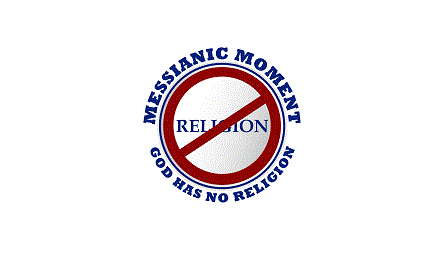Do you know the 10 Commandments? Most of us can tell you all ten, but the problem is whether or not those are the Real 10 Commandments.
Specifically, it’s the first commandment I am talking about.
If you prefer to watch a video, click on this link: Watch the video.
I have found many different versions of the Big 10, depending on whether you are looking at a Jewish Bible or a Gentile Bible.
Here are some blatant examples of what I mean (Exodus 20):
Complete Jewish Bible (the Hebrew letters stand for “1” and “2”)-
“Then God said all these words:
א “I am Adonai your God, who brought you out of the land of Egypt, out of the abode of slavery.
ב “You are to have no other gods before me. You are not to make for yourselves a carved image or any kind of representation of anything in heaven above, on the earth beneath or in the water below the shoreline….”
The Church of Jesus Christ Internet site –
The following review of the Ten Commandments includes brief explanations of how they continue to apply in our lives today:
1. “Thou shalt have no other gods before me…”
2. “Thou shalt not make unto thee any graven image…”
Google search (first hit)-
“The 10 Commandments
- You shall have no other God’s before me.
- Thou shalt not make unto thee any graven images. …”
Do you see what I am talking about?
If you are a Gentile, the 10 Commandments you most likely have been taught (to be fair, not all Gentiles were taught incorrectly) that the first commandment is not to have any other Gods before the true God. It ignores the first commandment from the Torah, which God, himself, dictated to Moses, essentially rejected that he is the God who brought us out of Egypt.
In other words, many Gentiles have never been taught that it is God who is truly our Savior.
Oh yes, it references that God brought us out of Egypt in the regular text, but it is NOT listed as a commandment.
Now, why would a Gentile Bible ignore this commandment?
(I haven’t looked at every different version, but my experience justifies my statements)
Why leave out what God considers to be the very first thing that people who worship him should know and remember?
Well, the answer seems obvious: the Gentiles who worship the God of Abraham, Isaac, and Jacob- the TRUE God- weren’t taken out of Egypt, so they can ignore that first commandment.
Simple. Easy to understand, and quite frankly…it makes sense.
But, as Dick Tracy detectives would say before calling him on their wrist-radio,
“HOLD EVERYTHING!”
(If you’re not older than 65 then you probably don’t understand this reference)
If you are a Believer, someone who has accepted Yeshua (Jesus) as your Messiah, then according to the New Covenant writings, you are a member of Israel and an adopted child of Abraham (Ephesians 3:4-6).
In other words, when you accept Yeshua as your Messiah and are “Born Again”, then you are also a member of the tribes that came from Abraham, Isaac, and Jacob.
That means that you, too, were taken out of slavery from Egypt!
Now, maybe the “Egypt” for Gentiles is more spiritual than it was physically for the Jewish people back then; i.e., Egypt representing slavery instead of a country, which is a metaphor often used in the Tanakh.
But the idea that God is the one who saved you from an “Egypt”, which could be either physical slavery to people or spiritual slavery to sin, is just as meaningful and important for Gentiles as it is for Jews!
So, here is my message for today: The first commandment, which identifies the God of Abraham, Isaac, and Jacob as the one who took us out of slavery is important for Jews and Gentiles: representing to Jews the freedom from slavery to men, and representing to Gentiles their freedom from slavery to sin.
Of course, for all of us now, this is only available through the Jewish Messiah, Yeshua, who has also made it possible for Gentiles to become adopted children of Abraham.
The real first commandment identifies God as the one who is our savior from sin.
Gentiles have been taught that Jesus is their Savior, which is true him being the instrument through which we can receive forgiveness of our sins.
BUT…Jesus doesn’t forgive sins now, so he isn’t really the one who saves us: the one, and only one, who forgives our sins, thereby saving us from spending eternity out of the presence of God is…G-O-D!
Yeshua (Jesus) is our Intercessor– he sits at the right hand of God, pleads our case, asks his Father to answer our prayers sent in his name, and tells God that we are one of his flock.
If you pray to Jesus, your aim is off- he never said to pray to him. He is the Intercessor of our prayers, not the Interceptor of them.
So, if you want to learn the real 10 Commandments, remember that the first one is:
God is the one who saved you from slavery by bringing you out of Egypt, out of the house of bondage.
Whether that “Egypt” was the country or representative of slavery (as in, to sin) doesn’t matter: what does matter is that you know God is your true Savior.
Thank you for being here and please subscribe to this ministry, on both my website and my YouTube channel, and join my Facebook group called “Just God’s Word” (please read and agree to the rules); please comment on these messages and let’s drash it out, together.
That’s it for today, so l’hitraot and Baruch HaShem!

